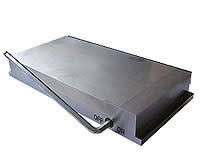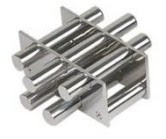The term rare-earth element magnet may be a generic name wont to describe two sorts of magnetic material: samarium cobalt and neodymium iron boron. Both of those magnetic alloys utilize Rare Earth Magnet elements because the magnetic constituents and therefore the characteristics offered by both material types lend themselves to specific applications.
Over
30 years ago, neodymium magnets were developed by General Motors and Sumitomo
Specialty Metals in response to the rising cost of samarium cobalt. Since its
inception, neodymium iron boron has undergone a numerous enhancements, and
today, this material is that the hottest and widely used magnet alloy. It’s
also important to understand that there are many patents covering the assembly
of sintered neodymium iron boron magnets. Here at Dura, the neodymium iron
boron we supply is licensed and compliant to all or any applicable patents.
Of
all magnetic materials (including other rare earths), neodymium iron boron
offers the very best available magnetic energy density with (BH)Max values
starting from 33 to 52 MGOe. This property allows designers to use relatively
small amounts of magnetic alloy in comparison to other magnetic materials.
Although
the smaller magnets and increased savings related to neodymium might suggest
choosing a high strength neodymium magnet is that the most suitable option for
all applications, this is often not always the case. Ignoring important
characteristics like operating temperature or the magnet’s ability to face up
to corrosion may cause premature failure and substandard performance.
Alternative heat grades of neodymium iron boron and various surface treatments
are available when the trials of the appliance demand it.
Most
of the main Motor arc Magnets
manufacturers (including Dura) offer charts and data describing the physical
characteristics of obtainable magnets grades, including rare-earth element
magnets. This information may be a huge help when selecting a rare-earth
element magnet, but it's only a start line.
The
different magnetic and physical properties of those two magnetic alloys means
choosing the right rare-earth element magnet is more complex than locating a
web vendor offering an appropriate size. Ultimately, selecting the right
rare-earth element magnet is application driven, and your best bet is to talk with
an engineer to debate your specific needs.


No comments:
Post a Comment